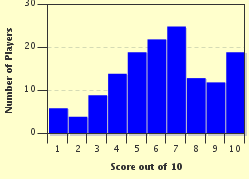Quiz Answer Key and Fun Facts
1. A logical place to begin looking at Earth's cooling might be to study a bit about the Ice Age. Who was the German botanist who first coined the term, "Ice Age", in 1837 as a reference to a theory about global cooling?
2. The Northern Hemisphere has experienced several "little ice ages" which were more of a quirk or an anomaly than ice ages as such. These cooling temperatures followed along behind a set of conditions that caused somewhat warmer temperatures than normal. In roughly what timeframe in history did this series of events occur?
3. In 1883, what cataclysmic event caused temperatures worldwide to plunge nearly 2 degrees Fahrenheit?
4. The "year without a summer" was a unique event, an agricultural disaster, and resulted in frozen ground and even snowfall in June in parts of the Northern Hemisphere!
What year was this that saw such aberrations in weather patterns?
5. In what way can the Sun influence global cooling, as well as warming trends, according to some researchers?
6. What is the name of the group of U.S. businesses that opposed the concept of global warming up until 2002?
7. Where are the two places that are generally considered to be the coldest inhabited places on earth, excluding research stations in Antarctica?
8. In 1983, one of the coldest temperatures ever was recorded on earth was in Antarctica. What did the thermometer record at that time?
9. What two U.S. states had the lowest temperatures that were recorded in the 20th century?
10. A record cold temperature of -25.6 (C) was recorded way back in 1903 in New Zealand. In what town was this record set?
Source: Author
logcrawler
This quiz was reviewed by FunTrivia editor
rossian before going online.
Any errors found in FunTrivia content are routinely corrected through our feedback system.

